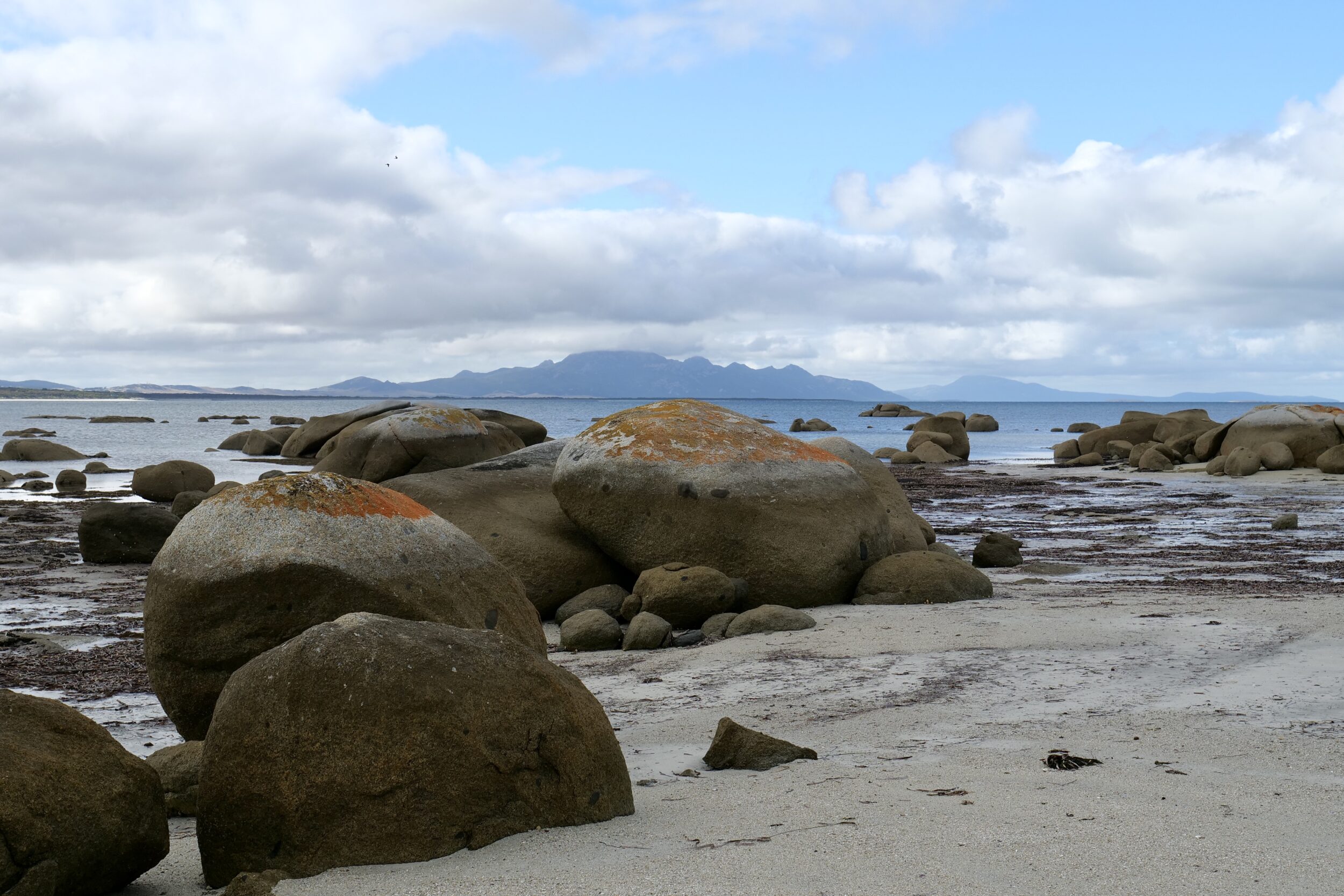It is Bass Strait’s largest island.
Among Tasmania’s more than 1,000 islands, only the “Apple Isle” is bigger.
However, Flinders Island’s nearly 1,400 square kilometres are home to fewer than 1,000 humans.
Any observant tourist will encounter many more wallabies than people; the same is true of wombats, cattle and Cape Barren geese.
Finding a splendidly wild and uncrowded beach is phenomenally easy; Flinders Island has more than 120 of them!
And if you are partial to granite and lichens….
Flinders Island is 62 kilometres long (south-north) and 37 kilometres wide,.
Smack in the middle of the “Roaring Forties”, this is a very windy place, subject to dramatic and sudden weather changes.
Flinders Island has 235 kilometres of coastline, globally significant wetlands, and a rugged “spine”.
The photo was taken on the morning of 18 March, 2025.
I was standing on one of the aforementioned 120-plus, on the island’s western side, a little closer to the island’s southern end than to its northern tip.
The image looks south, towards Flinders’ southwestern corner, which is dominated by the island’s highest peaks.
As you can see, the photo shows a number of the island’s aforementioned, key aspects.
It also shows another, discreetly: even during a very severe drought (as was then the case), if one walks on any Flinders Island shore, one can see birds.
If you zoom in and have a good look around, you should be able to see at least seven feathered individuals in this post’s photo.

Comments